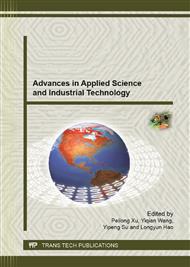p.1095
p.1099
p.1105
p.1109
p.1115
p.1119
p.1123
p.1128
p.1134
Research on the Driving Force Factors of Development of Low Carbon of Urban Transportation: Taking Tianjin as an Example
Abstract:
Urban transportation is the main way of carbon emission, development of low-carbon transportation has become the focus of attention of the countries all over the world. This paper analyses the influencing factors of carbon emission of Tianjin transportation based on grey correlation method, putting forward that the cost of urban resident transportation, traffic volume of urban passenger, number of private car and energy consumption of urban transportation are the most important key factors. Therefore, in order to construct low-carbon transportation system, Tianjin should design the layoff of urban space reasonably to control the demand of transportation effectively to reduce the urban transportation cost first, develop urban public transportation to optimize the urban traffic structure in response to the growing urban traffic volume of passenger second , establish a series of laws and regulations to improve the urban traffic management level to strengthen the supervision of private cars third, develop and apply new technology and new energy to adjust the energy structure of urban transportation to reduce urban transportation energy consumption at last.
Info:
Periodical:
Pages:
1115-1118
Citation:
Online since:
September 2013
Authors:
Price:
Сopyright:
© 2013 Trans Tech Publications Ltd. All Rights Reserved
Share:
Citation:


